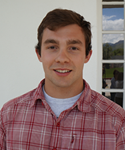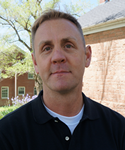iUTAH Undergraduate iFellows
Week 5 Recap
June 16-20, 2014
Allison Albert
 This week I tested the 2 inch and 1inch diameter lysimeters to see how accurate they measure carbon, phosphorus, and nitrogen. Unfortunately, I was only able to work Monday and Tuesday, due to leaving the state to compete in the National Concrete Canoe Competition for Utah State University. At the NCCC we placed 4th overall, 1st in final product, 3rd in technical paper, and 5th in oral presentation.
This week I tested the 2 inch and 1inch diameter lysimeters to see how accurate they measure carbon, phosphorus, and nitrogen. Unfortunately, I was only able to work Monday and Tuesday, due to leaving the state to compete in the National Concrete Canoe Competition for Utah State University. At the NCCC we placed 4th overall, 1st in final product, 3rd in technical paper, and 5th in oral presentation.

Apparatus to test the 2in diameter lysimeter for accuracy by putting the lysimeter in a premade solution of citric acid, phosphorus, and nitrogen and comparing the results to the known solution concentrations.

2in lysimeter test, with the pump in partial view. The procedure is to pump the bike pump, and as the handle is pulled up a vacuum is formed that pulls water into the lysimeter’s porous cup and through the tubing to the test jar.

The 2014 Utah State University Concrete Canoe Team, at the 2014 National Concrete Canoe Competition at the University of Pittsburgh at Johnstown. USU won 4th place overall.
Tim Beach

Week five was spent in Nevada. The second half of our trip was mostly devoted to doing upkeep on the DTS cable and downloading data from various temperature loggers along the Walker River. Our cable was collecting data every 10 minutes 24/7. In order for it to continuously run, we connected the cable's computer system to a generator, which had to be filled with gas every day. We also had to walk the cable everyday to make sure it wasn't buried in the alluvial riverbed as well as fill calibration coolers with ice. At the end of the week we packed up the cable, downloaded the data, and returned the DTS cable to University of Nevada at Reno. I am grateful for this experience- I learned a great deal about how rivers work and how to set up experiments in the field. It was also a good break from the computers.
Toby Brotherton

This week Kenyon and I met with Jackie Grant, an entomologist from SUU, who has been working with us on our study of insects on green roofs. We learned some important things about trap placement, and also made some improvements to our current traps. We took our first sample of bugs from each trap, and began the organization/classification process, which will be far more work intensive than we planned on. We are working on gaining access to a biology lab so that we can use microscopes, pipets, and forceps to facilitate classification. I have also been working on literature review and designing an experiment for testing how ET varies with irrigation intensity.
Andrew Butterfield

This week has been mainly devoted to hashing out an experimental design for my official iUTAH project. Working with my graduate mentor, Julie Kelso, I will be studying the way that light exposure breaks down small, dissolved organic compounds present in the Jordan River. These small particles are important in any aquatic ecosystem as they are an important component in the structure of an ecosystem's food web. The Jordan River is a particularly important example of the relevance of this dissolved organic matter, as the Utah Department of Environmental Quality has determined the waterway to be of poor quality due to an overloading of organic matter, with multiple negative results. The following Monday, Tuesday, and Wednesday will be spent in Salt Lake, collecting, incubating, and processing water samples along the Jordan River, to be later analyzed by absorbance, fluorescence, and total organic carbon levels. These analyses can potentially provide insight into the source and type of the excess dissolved organic matter present in the Jordan. As a small aside, I spent Thursday and Friday up Logan Canyon with GAMUT technician Chris Cox, helping him install his second high elevation aquatic station.
Kenyon Gentry
 The combination trap on the Natural History Museum blew over at some point over last weekend, so we fixed it with a more secure set up. We also met with Jacqualine Grant from Southern Utah University and talked about insect identification and other sampling details. One sample from each of our sites has been collected thus far, and we plan to add one more site next week.
The combination trap on the Natural History Museum blew over at some point over last weekend, so we fixed it with a more secure set up. We also met with Jacqualine Grant from Southern Utah University and talked about insect identification and other sampling details. One sample from each of our sites has been collected thus far, and we plan to add one more site next week.

Kenyon and Toby Brotherton’s combination trap, designed to collect flying insects at the Natural History Museum of Utah field site , blew over last weekend.
Adam Henrie
 I spent this week continuing field work by surveying the public in various environments. Built, green-space, and riparian environments were of interest, and the experience continues to be interesting. The sunny weather adds a nice touch to the survey work. I've also been creating a presentation for my lab group on my research project, which gives me great practice for presenting in the iFellow Symposium.
I spent this week continuing field work by surveying the public in various environments. Built, green-space, and riparian environments were of interest, and the experience continues to be interesting. The sunny weather adds a nice touch to the survey work. I've also been creating a presentation for my lab group on my research project, which gives me great practice for presenting in the iFellow Symposium.
Katy Hicks
 My fifth week was spent coding more articles and reviewing some more literature.
My fifth week was spent coding more articles and reviewing some more literature.
Alexis Holzwarth
 This week, Phillip Stoker got back from his two week vacation in Barcelona. With his guidance, we continued merging datasets and started using the ArcGIS program. It was really cool to see the map appear from the data I have been staring at so long, thanks to a very helpful tool. We will soon see statistical results.
This week, Phillip Stoker got back from his two week vacation in Barcelona. With his guidance, we continued merging datasets and started using the ArcGIS program. It was really cool to see the map appear from the data I have been staring at so long, thanks to a very helpful tool. We will soon see statistical results.
Jeffery D. Josephson

This week in my iFellowship was great. Monday was the cohort meeting at USU. We had some brilliant instruction in presentations and poster construction. I can't speak for other iFellows but I certainly appreciated the lessons. After that we had a quick trip to the field where Chris Cox showed us some of his instrumentation for his work.
The rest of the week proved to be a lesson in patience. After three weeks of data conglomeration and merging data sets, something went wrong with my work. At the end of the day I had to start from scratch and build the data again. Lesson here: Save, save, save, and then back it up!

The ifellows cohort visits an iUTAH aquataic station along the Logan River with Field Technician, Chris Cox.
Claire O'Donnell
 This week started off with a cohort session where we talked about poster presentations. We talked about how the poster should be laid out and how we should introduce people to our topic. I went to several nurseries to collect more data and started to experiment with planting pots. Grass clippings and biomass were taken again this week for our fertilizer research.
This week started off with a cohort session where we talked about poster presentations. We talked about how the poster should be laid out and how we should introduce people to our topic. I went to several nurseries to collect more data and started to experiment with planting pots. Grass clippings and biomass were taken again this week for our fertilizer research.
Samuel Stout

Anne Thomas
 This week I became a master at plotting datalogger data from excel on the statistics program R. At least in the exact context of my graduate student mentor, Mike Bunnell’s sap flux data.
This week I became a master at plotting datalogger data from excel on the statistics program R. At least in the exact context of my graduate student mentor, Mike Bunnell’s sap flux data.
Michelle-Kei Williams

This fifth week, I assisted in spectral analysis of the soil samples that I collected from a prior visit to the Pariette Watershed during week 2. I also worked further on a literature review for Pratibha & ran synthetic storms at the storm site & collected samples of the influent & effluent flows to be analyzed in the chem lab. Additionally, I met with my mentor, Christine Pomeroy, to help assist me in narrowing down my focus & began researching what constituents could be found in Salt Lake City urban runoff.





